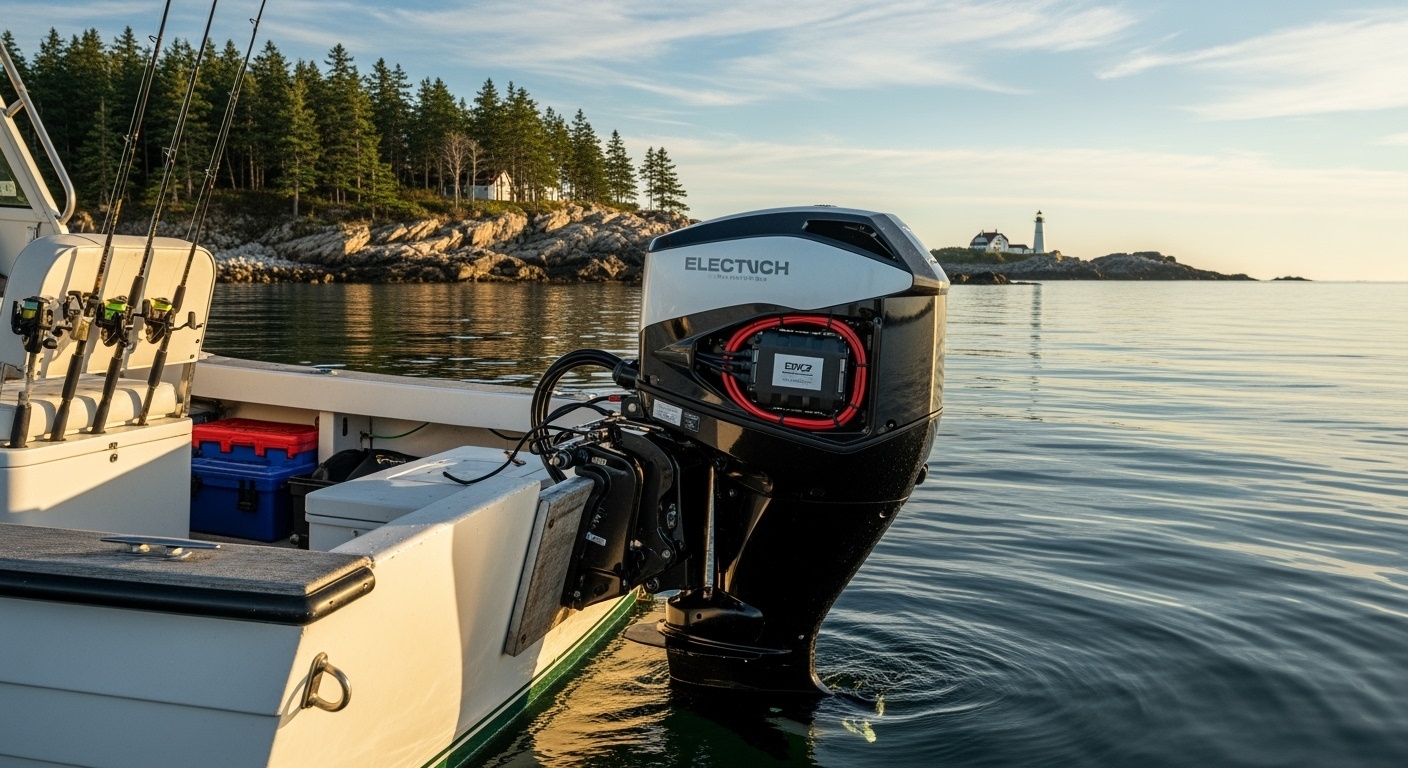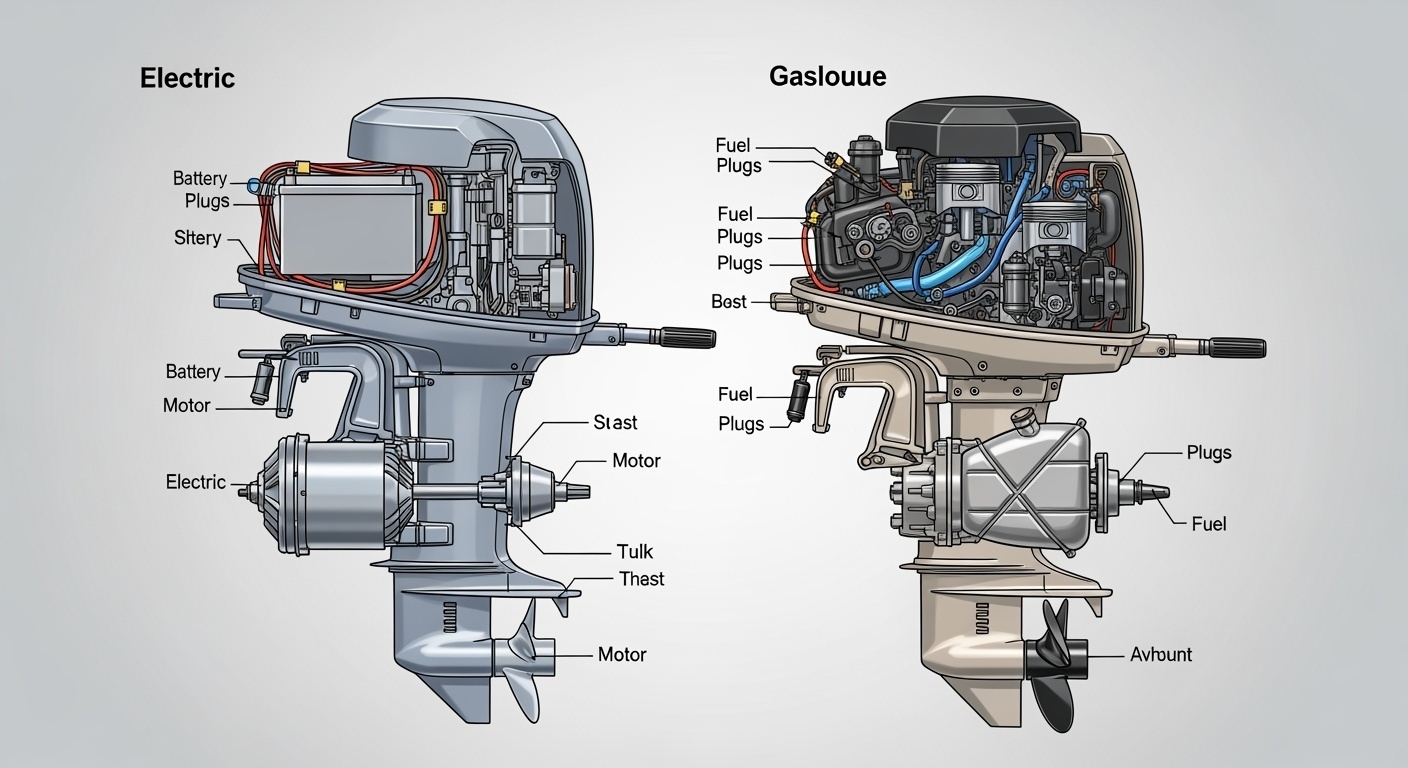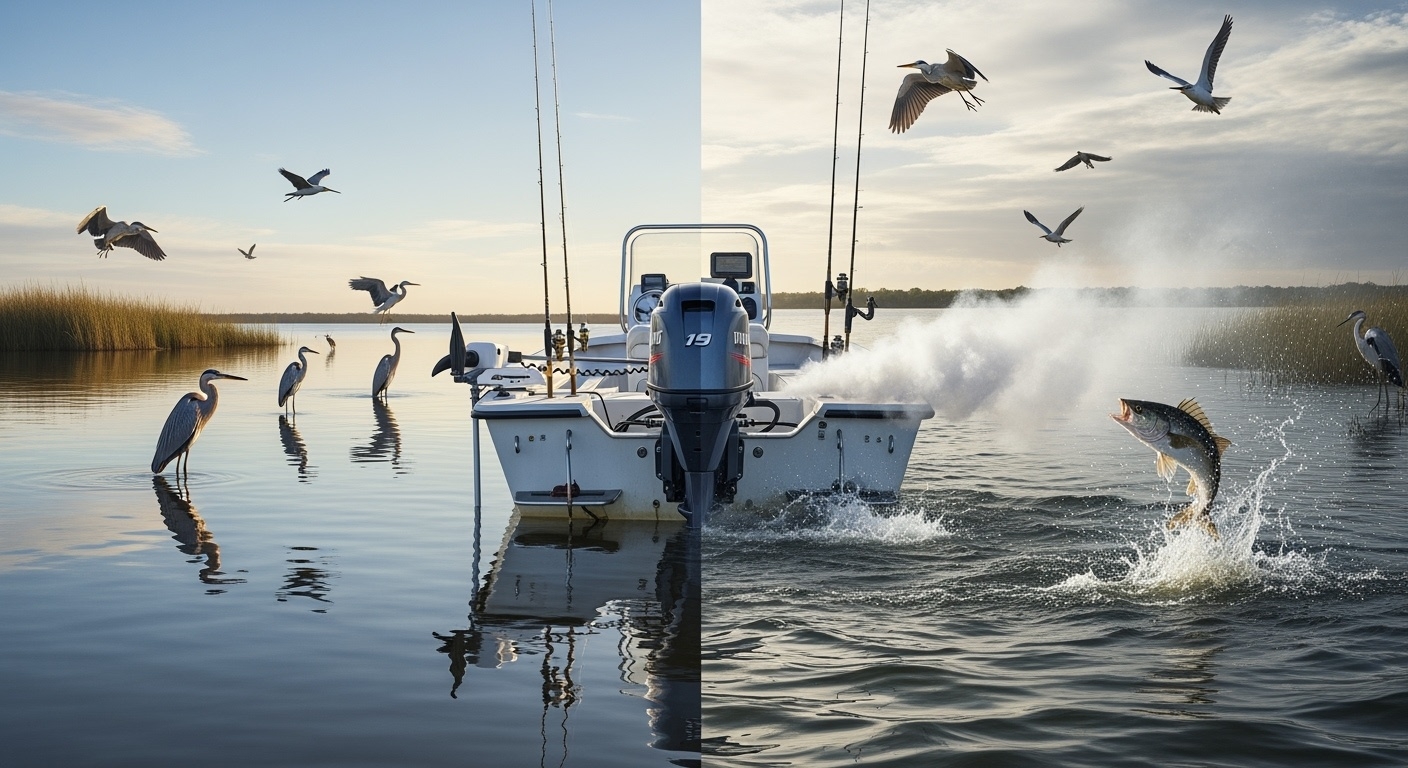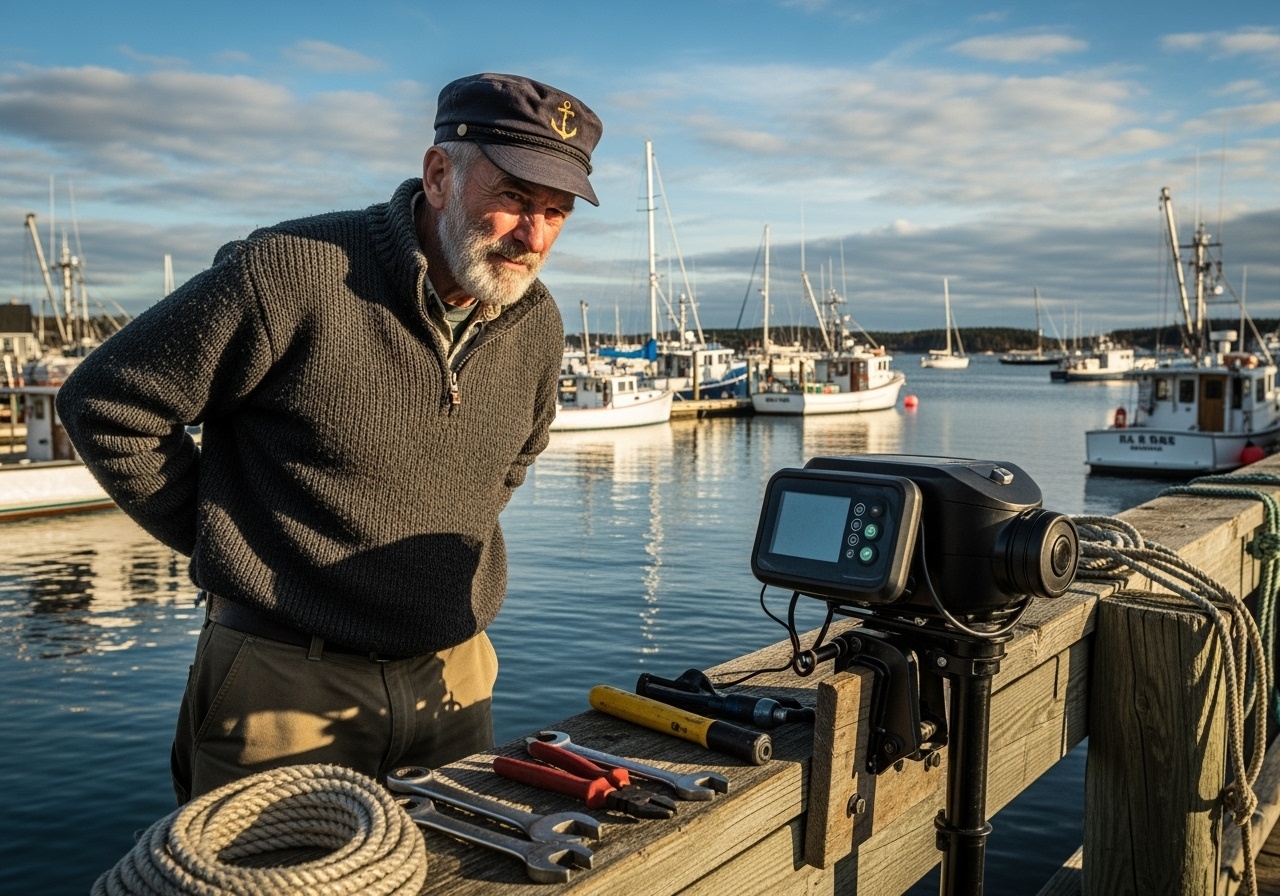Electric Outboards in Saltwater: A Skeptic's Hard Look at the Current State of Affairs
By Captain Dom
Modern electric outboard motor in saltwater with Maine coastal scenery
After 55 years running boats along the Maine coast, from Casco Bay to Penobscot, I've seen plenty of "revolutionary" marine technologies come and go. Most end up rusting in someone's garage next to their Betamax player. So when folks started buzzing about electric outboards being the future of boating, my first instinct was to check if they were selling bridges too.
But here's the thing about being a proper skeptic - you've got to follow the data, not your gut. So I spent the last season digging into the physics, chemistry, and real-world performance of these electric contraptions. What I found might surprise you. Hell, it surprised me.
The Current Players: Who's Actually Making Waves

Technical cutaway comparison between electric and gas outboards showing internal components
Let's start with who's putting their money where their mouth is. The marine electric outboard market isn't exactly crowded, but the players who are in it seem serious about staying.
Torqeedo out of Germany has been at this game the longest, since 2005. Their Deep Blue series pushes up to 100kW (about 136 hp equivalent), which isn't shabby. They're targeting everything from dinghies to commercial vessels, and their integrated battery systems show some actual engineering thought.
ePropulsion came out of Hong Kong in 2012 and focuses on the 3-40hp equivalent range. Their Spirit 1.0 Plus is particularly interesting for small craft - lightweight, relatively affordable, and with a battery that actually floats if you drop it overboard. Someone was thinking.
Mercury Marine finally woke up and smelled the lithium with their Avator series. When the big boys start playing, you know the tech has legs. Their 7.5e and 20e/35e models are clearly aimed at the tender and small fishing boat market.
Evoy from Norway is swinging for the fences with systems up to 450hp. They're targeting commercial operations and larger recreational vessels. Bold move, we'll see if it pays off.
The Good: Where Electric Actually Makes Sense

Split comparison showing the quiet operation benefits of electric vs. gas outboards
Here's where my skepticism started cracking: the torque curves on these things are genuinely impressive. Electric motors deliver maximum torque from zero RPM, which means instant hole shot without the drama. For trolling stripers along the rocks at 2-3 knots, the precision control is actually superior to any gas engine I've run.
The silence is no gimmick either. I borrowed an ePropulsion Navy 6.0 for a week last August. Motoring into my favorite cove at dawn without announcing my arrival to every fish in a half-mile radius? That's a legitimate advantage. The cormorants barely looked up.
Maintenance is where these things really shine. No winterizing, no impeller changes, no carburetor rebuilds, no spark plugs, no oil changes. After five decades of skinning my knuckles on outboard powerheads, I can appreciate the elegance of a sealed motor with one moving part.
The Bad: Physics Hasn't Been Repealed
Now for the reality check. Energy density is the elephant in the wheelhouse that nobody wants to talk about honestly. Lithium batteries, even the fancy lithium-iron-phosphate ones, pack about 1/40th the energy density of gasoline by weight. That's not a engineering problem - it's chemistry.A 5-gallon gas tank weighs about 35 pounds full and contains roughly 170,000 BTUs of energy. To match that with current battery tech, you'd need about 850 pounds of batteries. On a 16-foot skiff, that's the difference between planing and plowing.
Range anxiety isn't just for Tesla owners anymore. Most electric outboards in the 10-20hp range give you 1-2 hours at cruising speed on a single charge. That's fine for lake fishing or harbor puttering, but try explaining to the Coast Guard that your battery died 10 miles offshore in a building sea. They won't be amused.
The Ugly: Saltwater Remains Undefeated

Experienced sea captain examining electric outboard technology on a Maine harbor dock
Here's where my 55 years of watching the ocean eat everything metal comes in handy. Saltwater and electricity have been mortal enemies since Ben Franklin flew his kite, and that hasn't changed.
These manufacturers claim IP67 waterproofing (submersible to 1 meter for 30 minutes), but I've seen "waterproof" electronics fail from salt spray alone. The corrosion potential between dissimilar metals in a saltwater environment is vicious, and these motors have aluminum housings with stainless steel shafts and copper windings. That's a galvanic party waiting to happen.
Battery degradation in marine environments is accelerated by temperature swings and humidity. The manufacturers promise 10-year lifespans, but I'd bet my favorite rod those estimates come from laboratory testing, not from batteries that spent winters in a damp Maine boat shed.
Replacement battery costs will make you weep. A 48V, 5kWh battery pack runs $3,000-5,000. Compare that to a $150 carburetor rebuild, and the "low maintenance" argument starts looking expensive.
The Verdict: Right Tool, Right Job
After a season of investigation and hands-on testing, here's my assessment: electric outboards have found their niche, but it's smaller than the evangelists claim.For dinghies, tenders, and inland water fishing where you're never more than a mile from the launch? They make genuine sense. The instant torque, silence, and zero emissions in confined spaces are real advantages.
For coastal cruising, offshore fishing, or any application where "getting home" isn't optional? Not yet. Maybe not ever, given the fundamental physics involved.
The technology is improving. Solid-state batteries might double energy density in the next decade. Charging infrastructure is slowly appearing at marinas. Prices are dropping, albeit glacially.
But here's what 55 years on the water teaches you: the ocean doesn't care about your technology. It doesn't care about your environmental consciousness. It cares about reliability, range, and redundancy. Until electric outboards can match gas engines on those fundamentals, they remain an interesting option for specific applications, not a revolution.
Final Thoughts from the Dock
Would I buy one? For the right application, yes. I'm actually considering a small ePropulsion for my dinghy. But for my main boat? I'll stick with my trusty Yamaha four-stroke until the laws of thermodynamics change or battery technology makes a quantum leap.The future might be electric, but in saltwater, the present still burns dinosaurs.
For a different perspective on electric outboards in saltwater applications, check out this comprehensive guide from NY Angler.
Captain Dom has been fishing Maine waters since 1969 and holds a USCG 100-ton Master's license. When not fixing something on his boat, he can be found arguing about thermodynamics at the local harbor bar.
